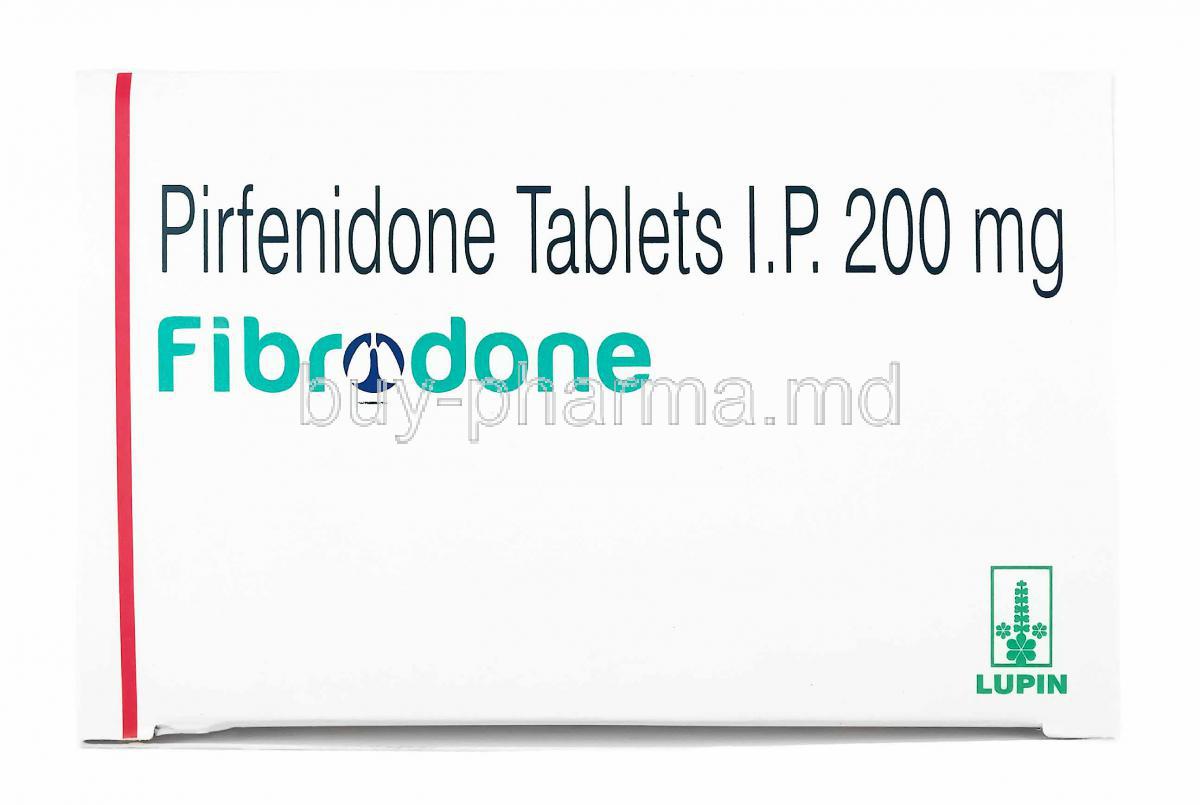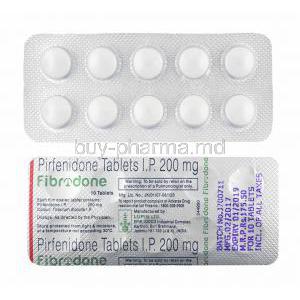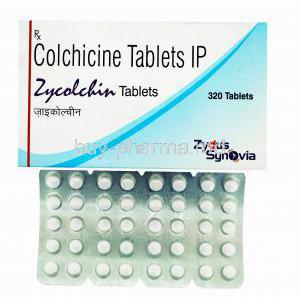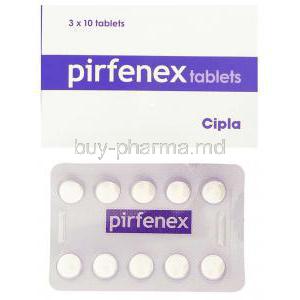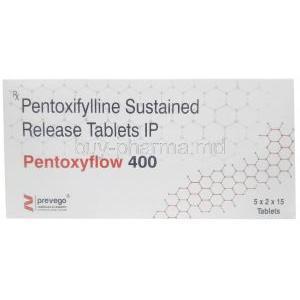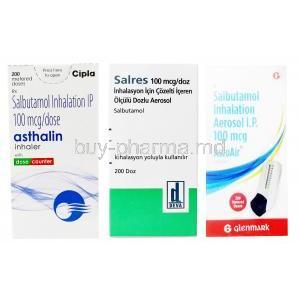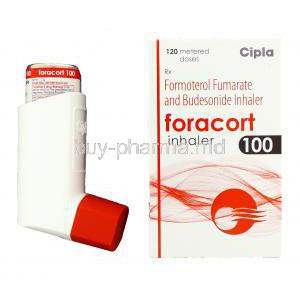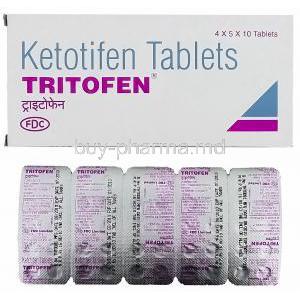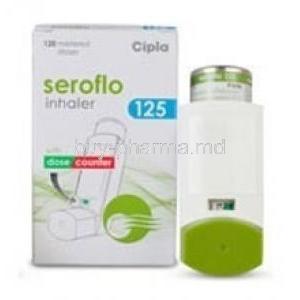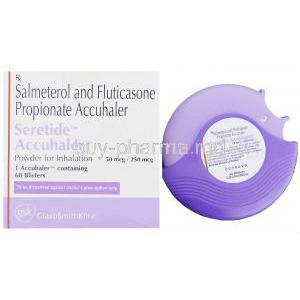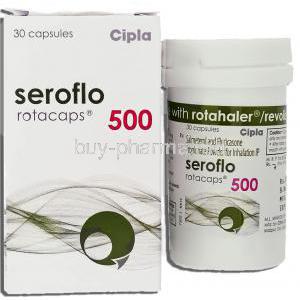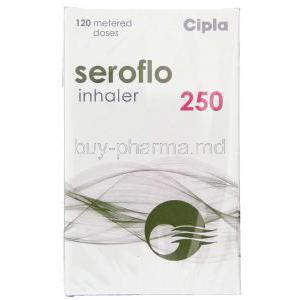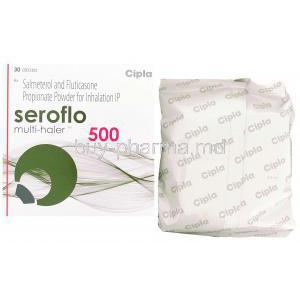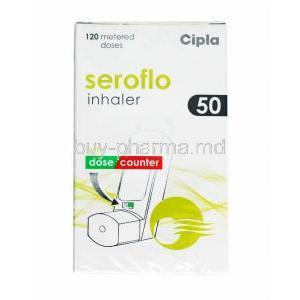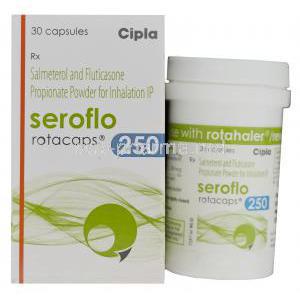Fibrodone, Pirfenidone
- Introduction to Fibrodone (Pirfenidone)
- Overview of Fibrodone and its Therapeutic Class
- Regulatory Status and Global Approval History
- Brand Names and Available Formulations
- Composition and Active Ingredients of Fibrodone
- Chemical Composition and Formulation
- Mechanism-Related Excipients and Their Roles
- nintedanib vs pirfenidone
- pirfenidone mechanism of action
- Pirfenidone uses
- Off-Label Uses of Pirfenidone
- pirfenidone dose and Administration Guidelines
- Administration in Specific Populations
- Administration to Pediatric Patients
- Common and Serious Side Effects of Fibrodone
- Drug Interactions and Pharmacokinetic Considerations
- Contraindications for Use of Fibrodone
- Warnings and Important Safety Precautions
- Careful Administration and Monitoring Requirements
- Overdose and Emergency Management
- Storage and Handling of Fibrodone
- Handling Precautions for Patients and Caregivers
Introduction to Fibrodone (Pirfenidone)
Pirfenidone is a medication used to treat idiopathic pulmonary fibrosis (IPF). A rare but serious lung condition that causes scarring in lung tissue and can lead to breathing difficulties and respiratory failure, over time. The unique thing, about Pirfenidone is that it works as an agent while also having anti-inflammatory and antioxidant properties. This medication brings hope in treating a condition by targeting aspects of its pathology. The pharmacodynamic characteristics of Fibrodone go beyond alleviating symptoms; it also helps regulate the underlying disease processes in lung conditions.
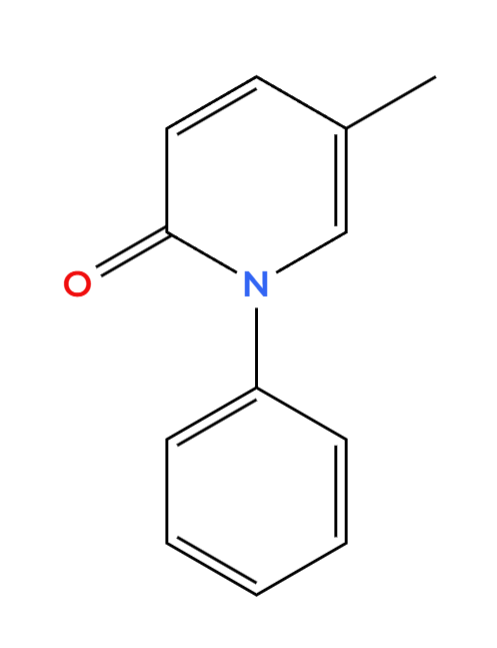
Overview of Fibrodone and its Therapeutic Class
Fibrodone is categorized under medications that specifically focus on inhibiting the pathways related to the growth of fibroblasts and the deposition of matrix components, in the body. It is commonly prescribed for treating;
- Idiopathic Pulmonary Fibrosis (IPD) Progressive fibrosing lung diseases are being studied under investigation protocols.
- This medicine helps slow down the deterioration of lung tissue structure and the decline, in function by aligning with targeted fibrotic treatments that focus on disrupting the molecular level architecture of fibrogenesis.
Regulatory Status and Global Approval History
Pirfenidone was first approved in Japan in 2008 as a step, in managing diseases. It later received approvals in Europe by the European Medicines Agency (EMA) and in the United States by the Food and Drug Administration (FDA) in 2011 and 2014 respectively. These decisions were based on evidence gathered during the CAPACITY and ASCEND clinical trials that showed its effectiveness in slowing down disease progression. Today, pirfenidone is available in than 40 countries making it a established treatment option, for IPF worldwide.
Brand Names and Available Formulations
There are brands of Fibrodone sold worldwide. These include both known and generic versions.
The medication is usually available, in the form of tablets or capsules with dosages ranging from 200 mg to 801 mg. There are efforts to create extended release versions that aim to improve the drugs stability, in the body and make it easier for patients to follow their treatment regimen.
Composition and Active Ingredients of Fibrodone
Fibrodone is mainly made up of pirfenidone which is a pyridone derivative, with a formula of C12H11NO. In each tablet or capsule carefully designed to have an amount of active ingredient along with other components to enhance absorption and reduce digestive issues.
Chemical Composition and Formulation
The molecular makeup of Pirfenidone gives it qualities that make it easily absorbed into the body when taken orally because of its weakly properties.The composition consists of the following elements;
- Microcrystalline cellulose is often used as a bulking agent, in products.
- Croscarmellose sodium is used as a disintegrating agent, in pharmaceutical formulations.
- Magnesium stearate is commonly used as a lubricant, in products.
- Silicon dioxide is used as a caking agent.
![]()
This pharmaceutical setup guarantees dissolution and even distribution while maintaining a release, in the body's natural conditions.
Mechanism-Related Excipients and Their Roles
In Fibrodones formulation, excipients do more than just stay inactive; some of them actually help boost the effectiveness of pirfenidone, for treatment purposes.
- Sodium lauryl sulfate helps increase solubility and penetration through membranes.
- Povidone stabalises drug substance and prolongs shelf life
The components are chosen based on pharmaceutical reasoning to complement the actions of pirfenidone.
nintedanib vs pirfenidone
The treatments nintedanib and pirfenidone are both commonly used for IPF treatment.
However; their ways of working in the body differ considerably.
- Pirfenidone is a substance that works as an anti-inflammatory agent while also possessing antifibrotic properties by targeting the TGF-I pathways.
- Nintedanib is a medicine that blocks the signaling pathways of VEGF ( endothelial growth factor receptor) FGF (fibroblast growth factor receptor) and PDGF (platelet-derived growth factor receptor).
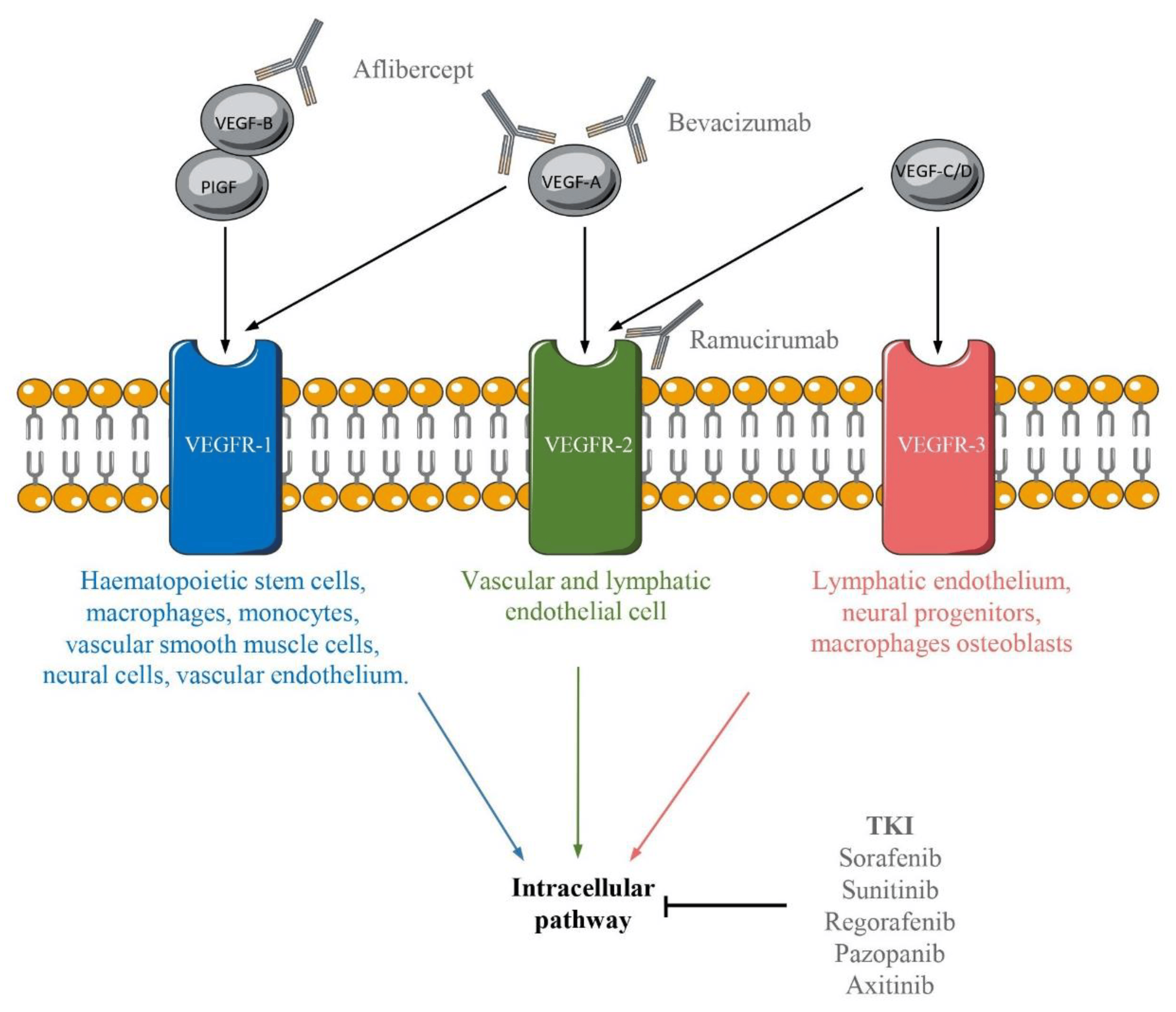
While both medications slow down the decrease in Forced Vital Capacity (FVC) they have different side effects profiles to consider. Pirfenidone is often linked to stomach discomfort and sensitivity to sunlight. On the other hand, nintedanib is known to lead to diarrhea and increases in liver enzymes. When deciding between the two options, factors such as a patient's existing health conditions ability to tolerate side effects and treatment goals may play a role, in making a choice.
pirfenidone mechanism of action
Mechanism of Action in Pulmonary Fibrosis
Pirfenidone works to reduce the remodeling of lungs by involving a combination of inhibiting signals and adjusting functions effectively. This drug helps in slowing down the growth of fibroblasts and reducing collagen production while also limiting the transformation of myofibroblasts. The overall result is a decrease, in the cycle of fibrosis, within tissues.
Antifibrotic, Anti-Inflammatory, and Antioxidant Effects
The therapeutic effects of Fibrodone operate through three approaches. Antifibrotic properties work by reducing the production of collagen genes and the buildup of fibroblasts, in the body. Reduces the buildup of cells. Controls the release of signaling proteins that cause inflammation. Antioxidants help reduce tissue damage caused by stress by neutralizing reactive oxygen species (ROS). These three steps are essential, for maintaining the structure and function of the lungs in the face of fibrosis.

Impact on TGF-β, TNF-α, and Cytokine Pathways
Transforming Growth Factor beta (TGF beta) known as a regulator of fibrosis development is influenced by Pirfenidone which disrupts its activity to prevent the process of fibroblast transformation and matrix buildup. Pirfenidone also reduces the levels of Tumor Necrosis Factor alpha (TNF alpha) and interleukin-1β (IL-1β) which helps in decreasing cell migration and cytokine storm events.This multi level intervention alters the lung environment by shifting it from a state towards a healing one.
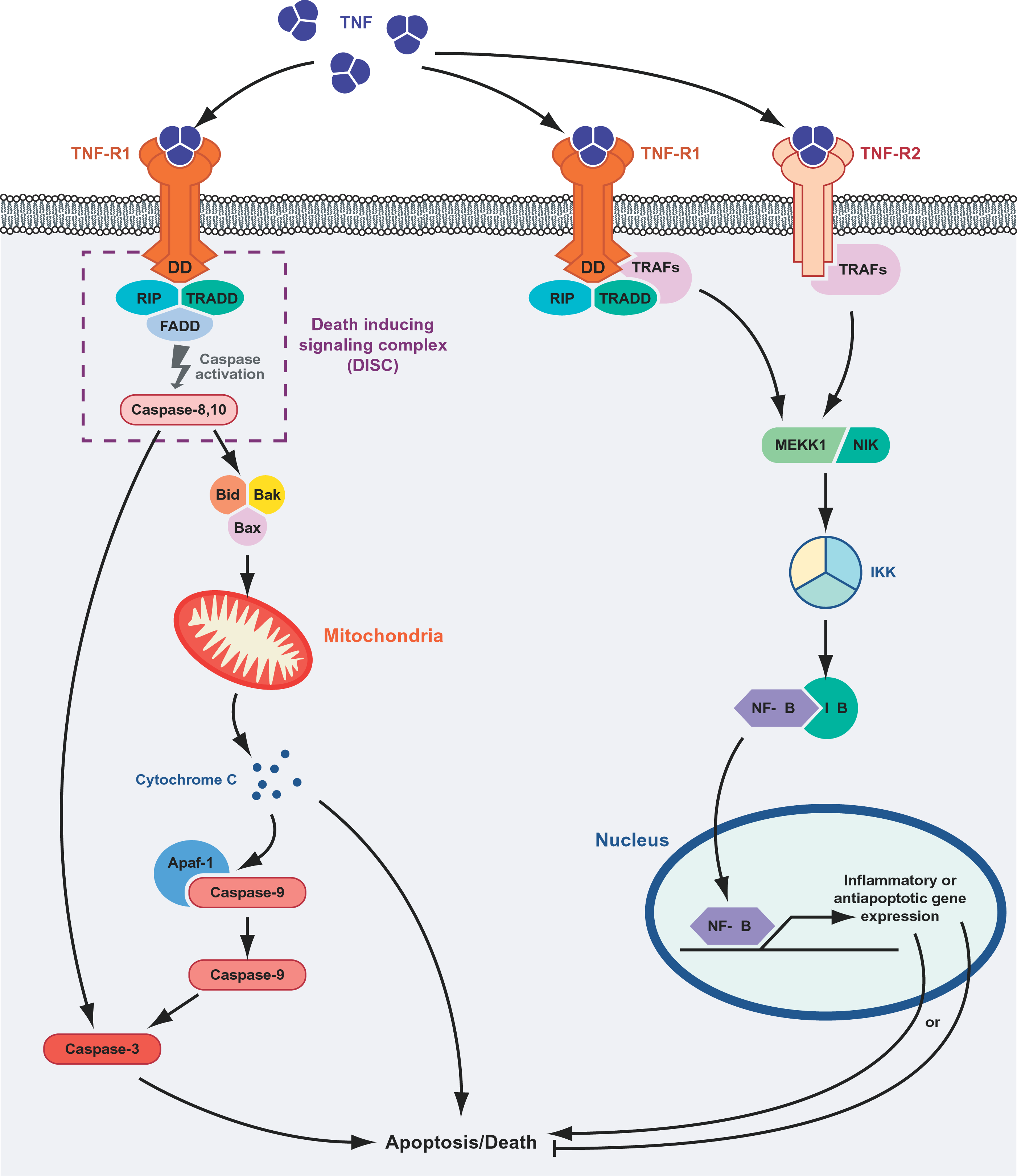
TGF
Pirfenidone uses
Treatment of Idiopathic Pulmonary Fibrosis (IPF)
Pirfenidone is mainly used to treat Idiopathic Pulmonary Fibrosis (IPF). A life-threatening lung condition, with a cause that causes scarring in the lungs' interstitium area and impairs breathing by affecting lung flexibility and gas exchange ability.Pirfenidone works by targeting the tissue restructuring processes at the heart of this change.
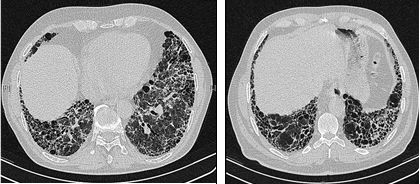
IPF
Its mechanism involves slowing down the growth of fibroblasts and stopping substances that promote fibrosis like transforming growth factor beta (TGF b). This medical effect slows down the formation of scarring that characterizes IP_Fibrosis.
- Reduces the buildup of collagen in the tissues of the alveoli.
- Inhibits the transformation of fibroblasts, into myofibroblasts.
- It blocks proteins, like TNF alpha and IL beta.
Pirfenidone is usually given in increasing doses by mouth to reduce stomach issues and ensure patients keep taking it for the term as part of the treatments, for idiopathic pulmonary fibrosis (IP) suggested by respiratory organizations, like ATS and ERS.
Clinical Outcomes and Benefits in Slowing Disease Progression
In depth studies, Like the Phase III trials, such as CAPACITY 1 and CAPACITY 2, along with ASCEND. Have shown that pirfenidone is effective in slowing down the advancement of IPfibre (IP). The main focus in these analyses was to maintain forced vital capacity (FCV) an indicator of lung function enhancement over time. Individuals who received pirfenidone experienced a decrease, in the pace of FCV decline during the 52 week period compared to those who were given a placebo treatment.
Furthermore researchers noted advantages which include;
- The postponement of disease progression.
- A decrease, in hospitalizations due to issues.
- Enhanced duration, without disease progression (progression survival or PFS)
Pirfenidone has shown promise in improving how patients feel and their overall quality of life, by affecting factors like difficulty breathing and measures of being in a way. While it doesn't provide a cure per se its ability to modify the progression of the disease is crucial in prolong ing both the lifespan and daily functioning of those dealing with IP F. Ongoing monitoring after it has been released to the market and real world data have validated these advantages establishing pirfenidone as a component, in treating lung conditions.
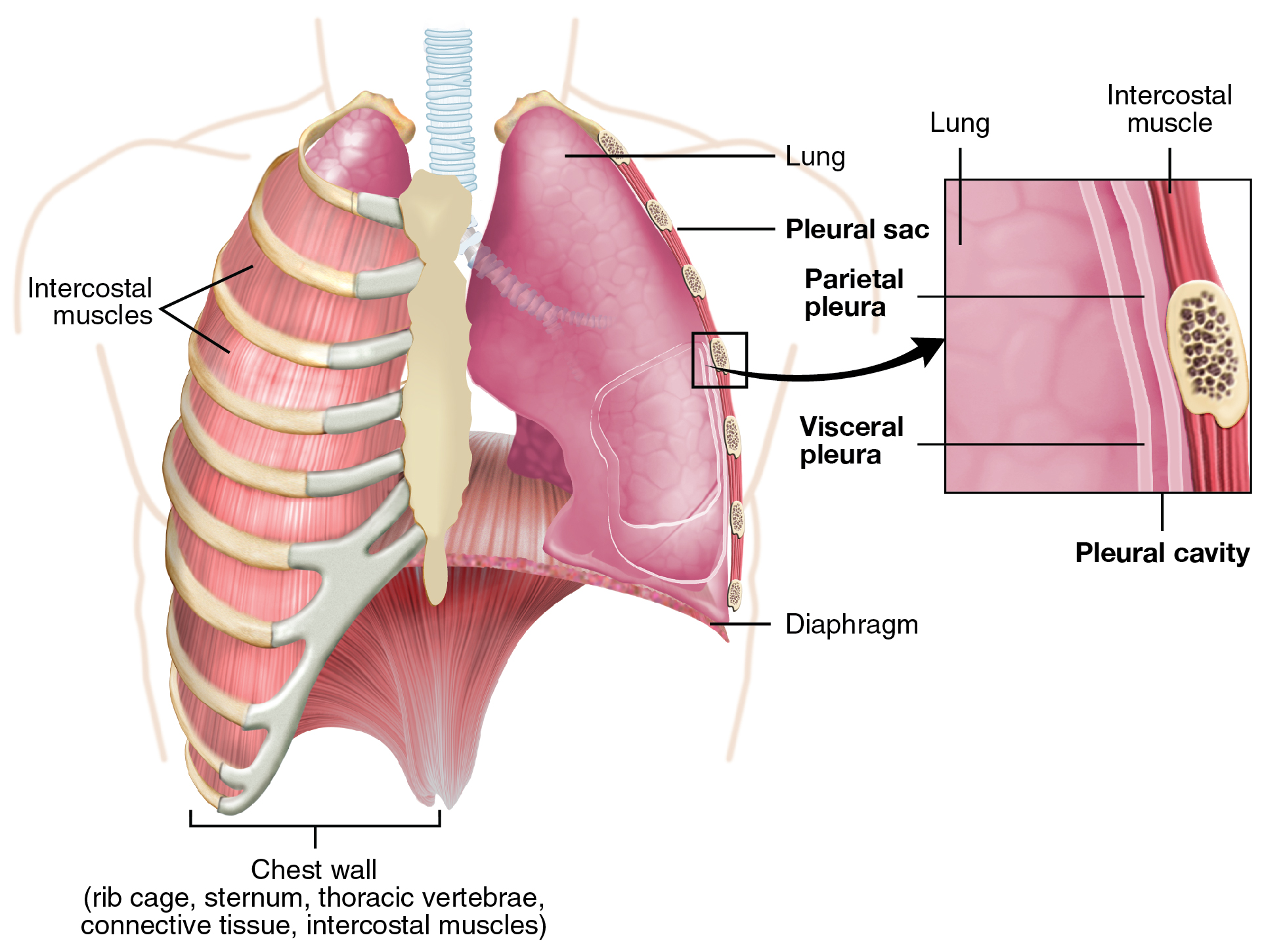
Off-Label Uses of Pirfenidone
Potential Use in Systemic Sclerosis-Associated Interstitial Lung Disease (SSc-ILD)
Systemic sclerosis linked interstitial lung disease (SSc LDIL) is an aspect of tissue disorders where fibrotic invasion affects lung function significantly.
Pirfenidone has attracted interest as a treatment supplement, in this area due to its ability to combat fibrosis. While not officially sanctioned for this purpose yet, prior research and early clinical evidence hint at its potential, in reducing the impact linked with SSc LDIL.
Initial studies show results regarding the use of pirfenidone. Decrease the function of fibroblasts and the buildup of matrix, in the lungs of individuals, with scleroderma.
Enhance forced capacity (lung function measurement under pressure exertion) when combined with immunosuppressants. Maintain lung function stability during moderate term monitoring periods. The use of it, in managing SSc related lung disease is still being explored,. It marks an advancement, in treating fibrosis.
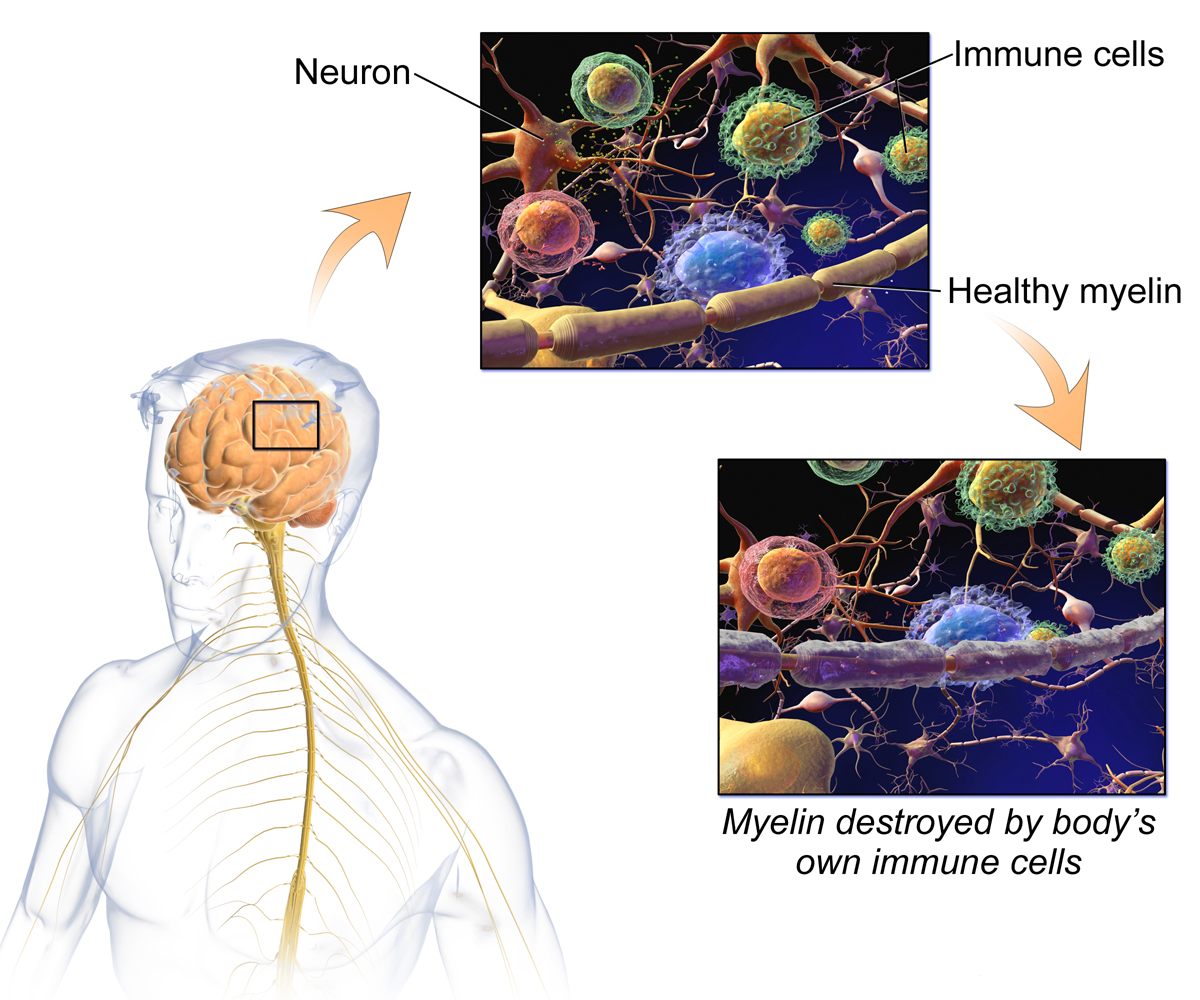
Liver Fibrosis and Nonalcoholic Steatohepatitis (NASH)
In liver diseases, like nonalcoholic fatty liver disease (NAFLD), the formation of tissue plays a role in the progression of the condition over time. The condition called NAFLD is becoming more common. It is characterized by accumulation in the liver along with inflammation and worsening scarring that can lead to cirrhosis.
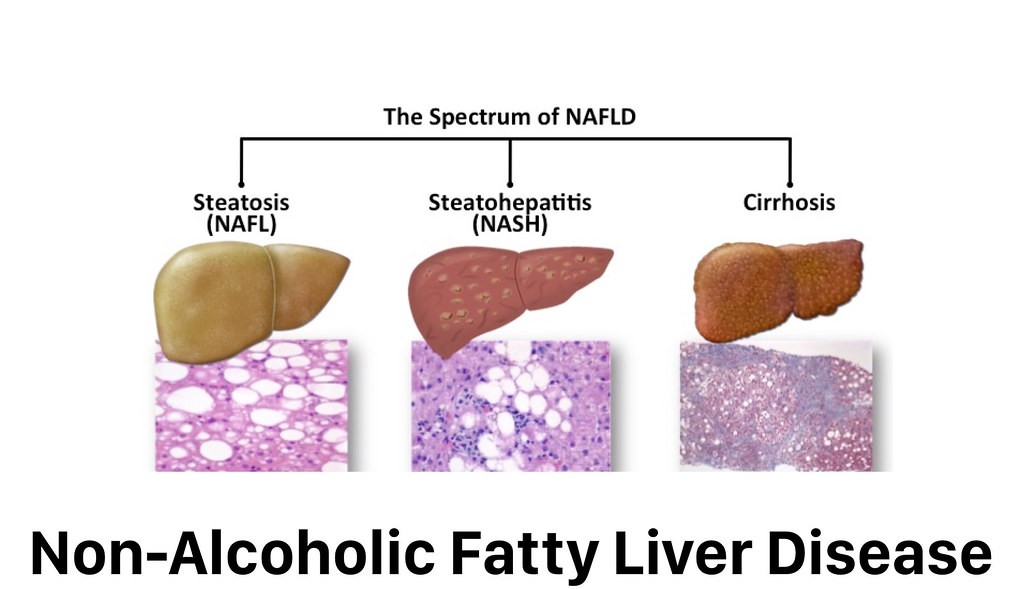
Experimental studies on animals and initial clinical trials have shown that Pirfenidone offers protection to the liver. Its suggested actions, in reducing liver scarring related to NAFLD include;
- Decreasing the levels of cytokines that promote fibrosis, like TGF beta and CTGF.
- Inhibiting the activation of liver cells.
- Reduced oxidative stress, in the liver tissue.
While there are still research studies at a scale needed to be conducted regarding this matter as it relates to pirfenidone in hepatic fibrosis; it is noteworthy how its adaptability, in pharmacodynamics and ability to influence fibrogenesis extends beyond just pulmonary tissues.
Renal Fibrosis and Diabetic Nephropathy
Chronic kidney disease (CKD) leads to fibrosis regardless of its cause, representing its stage. Taking nephropathy as an example, which is a major contributor to end-stage renal disease, pirfenidone has demonstrated potential in maintaining kidney function by reducing tubular interstitial fibrosis. Phase II studies indicate a decrease, in proteinuria and a stable glomerular filtration rate (GFR). Some notable pharmacological effects include;
- Inhibiting the production of fibronectin and collagen IV in kidney tissues.
- Regulating kidney inflammation by inhibiting the NF kappa B signaling pathway.
- Improving the expansion of the matrix.
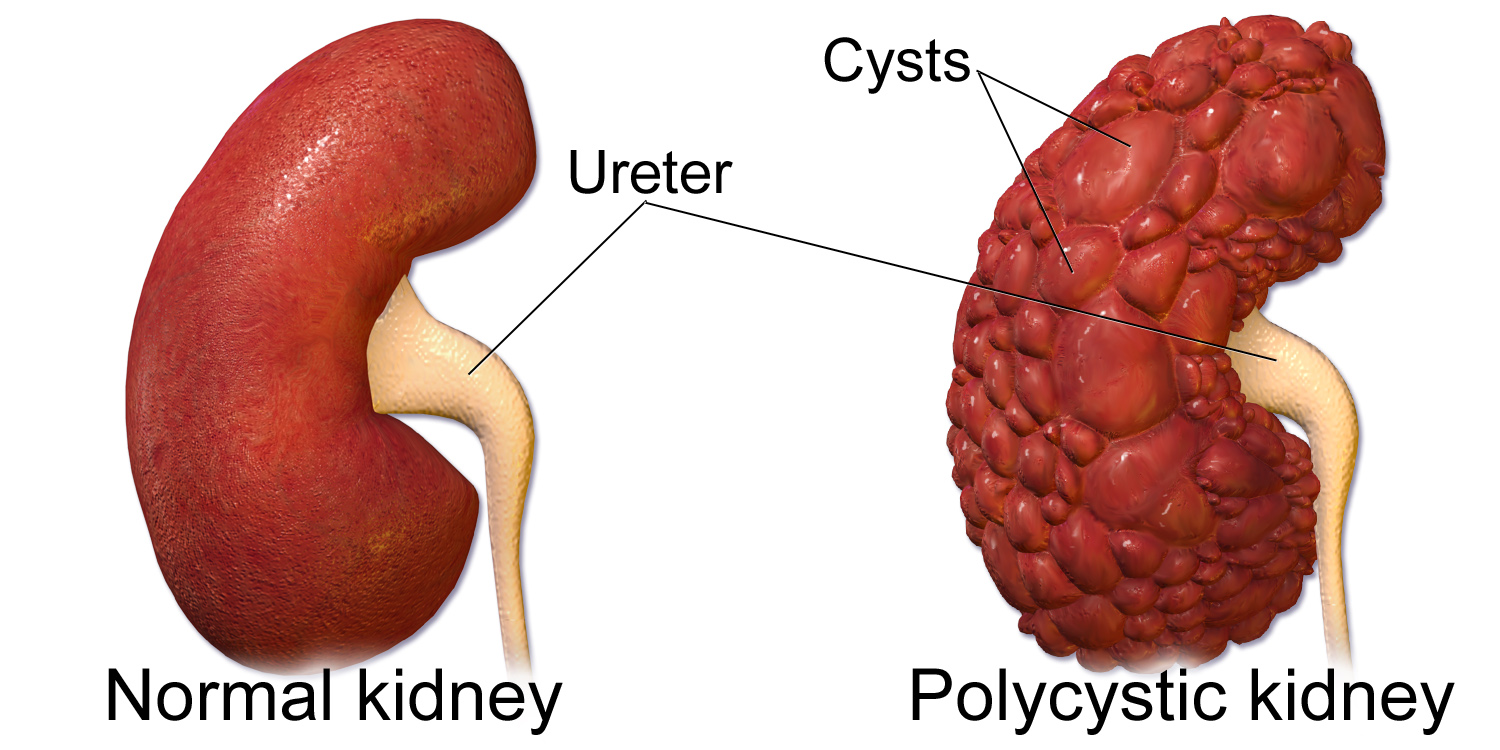
Researchers are still looking into using it for purposes not officially approved in the nephrology field for patients, with worsening protein levels that don't improve with usual treatments.
Post-COVID Pulmonary Fibrosis Management
The emergence of COVID-19 has led to a rise, in patients to developing lung issues as a consequence of the virus impact on their respiratory system, which could lead to post-infection pulmonary fibrosis. A condition marked by lingering ground glass opacities and changes in lung tissue structure and thickness.
Which presents significant challenges for those who have recovered from the disease. Where efforts are being made is in exploring the use of Pirfenidone in research studies to combat this identified fibrotic complication following viral infections. Its role, in addressing viral fibrotic changes is being closely examined;
- Inhibition of the release of fibrotic cytokines, in the midst of cytokine storms.
- Preventing healing reactions, in cells.
- Mitigation of scarring caused by the use of ventilation.
Though concrete clinical proof is still awaited, the initial compassionate use information offers a foundation, for delving into this use case.
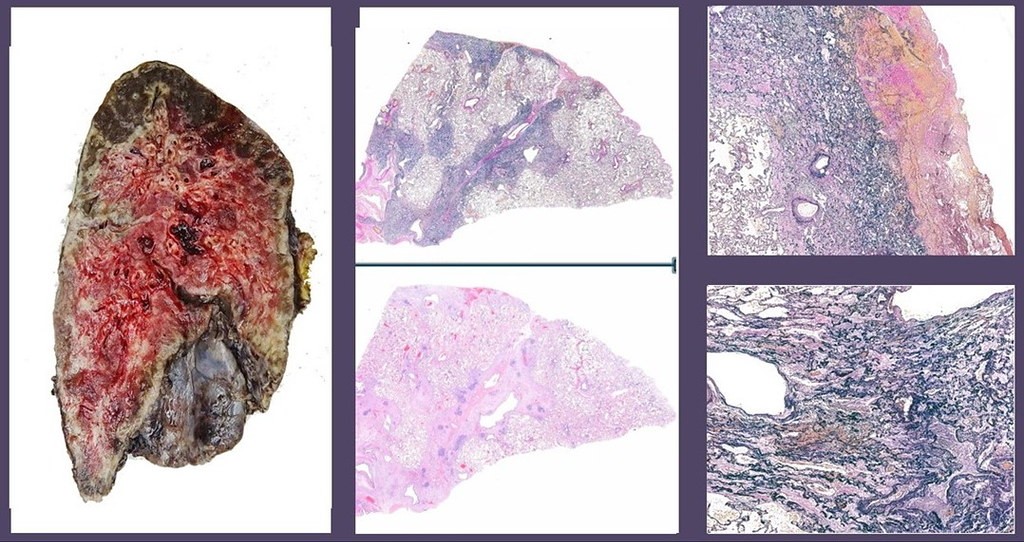
Emerging Research in Oncology-Related Fibrosis
Fibrosis related to oncology is an issue that can arise as a result of radiotherapy or chemotherapy treatments and can lead to complications in cancer survivorship due to organ malfunction and persistent pain issues. Researchers are particularly intrigued by Pirfenidones ability to potentially lessen the effects of fibrosis caused by radiation or damage to tissues caused by chemotherapy in cancer patients. Some potential applications of Pirfenidone, in the field of oncology, include:
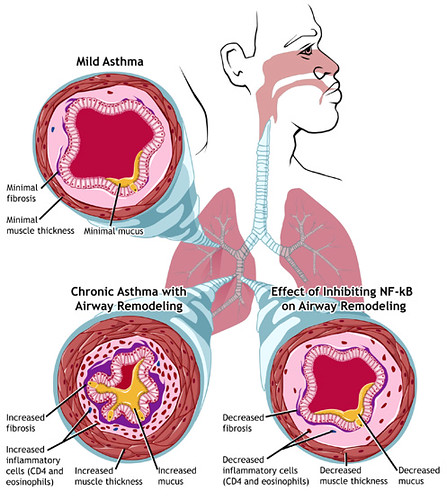
- Later scarring in patients undergoing treatment for chest tumors.
- Avoidance of peritoneum or back of the abdomen scarring in cancers managed with alkylating drugs.
- Adjusting the tissue surrounding tumors may help improve the delivery of drugs into the area.
While still in the phases of testing pirfenidones introduction, into the field of oncology highlights its abilities in fighting fibrosis and its potential as a complementary treatment, in comprehensive cancer management.
pirfenidone dose and Administration Guidelines
Standard Adult Dosing Schedule for IPF
When treating idiopathic pulmonary fibrosis (IPF), doctors typically start patients on a low dose of pirfenidone and slowly increase it to the effective range to reduce stomach and skin-related side effects common, with the medication.
- The usual treatment plan, for adults involves gradually increasing the dosage over 14 days in three stages until reaching a daily maintenance dose of 801 mg taken three times a day.
- From the first, to the day take 267 milligrams three times a day.
- From the day, to the day take 534 mg three times a day.
- From the day take 801 mg three times a day with a maximum daily intake of 2402 mg.
This progressive treatment plan enhances the ability to tolerate the medication while enabling the body to adjust to the effects of the compounds activity.
Dosage Titration and Adjustment Protocols
When faced with side effects from medication usage, it is crucial to adjust the dosage to ensure that the treatment remains effective. It is recommended to follow established protocols for pausing or decreasing doses, in cases. If you experience side effects such, as nausea or a rash, try lowering the dosage to 534 mg or 267 mg three times a day.
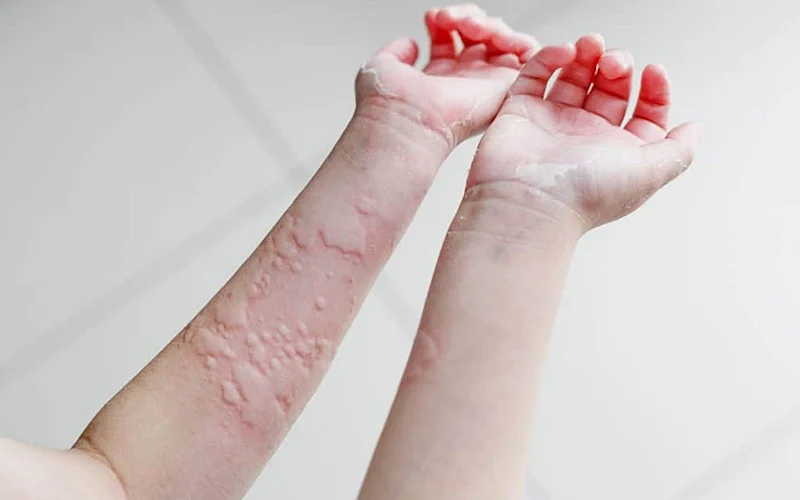
After addressing any side effects and allowing time, for recovery you can slowly increase the dosage back to the amount if necessary. Patients showing severe increases, in liver enzymes (such as ALT and AST levels exceeding three times the limit of normal) should undergo a thorough assessment for possible permanent discontinuation of treatment. Tailoring the dosage to suit each individuals needs is crucially important, in cases where patients have liver or kidney issues.
Missed Dose Instructions
If a patient forgets to take a dose of the medication at the designated time they should wait until the scheduled dose. Do not take two doses together. Maintaining levels of the medication, in the bloodstream is important to ensure its effectiveness, in fighting fibrosis. Therefore, it's important to remind patients about taking their medication during check-ups.
Administration with Food and Time of Day Considerations
For results, in minimizing stomach-related issues like nausea and loss of appetite while taking Pirfenidone done it's recommended to take it with a meal. The optimal time for consumption would be, with food. Breakfast, in the morning, lunch at noon, and dinner in the evening— following the meal times. Take the medicine with a glass of water to help it move through your stomach. Consistency throughout the day improves the predictability of how drugs are absorbed and reduces changes, in drug levels in the bloodstream.
Administration in Specific Populations
Administration to Elderly Patients
Dosage Considerations in Aging Populations
In patients, on pirfenidone treatment it is not automatically required to reduce the dosage due to changes in how the body processes the drug as people age, such as a decrease in kidney function and alterations in liver metabolism. It is important for healthcare providers to be more attentive due to these age-related changes. Starting treatment with the increase, in dosage is fine, but a slower increase could be an option depending on the individual patient's condition and symptoms.
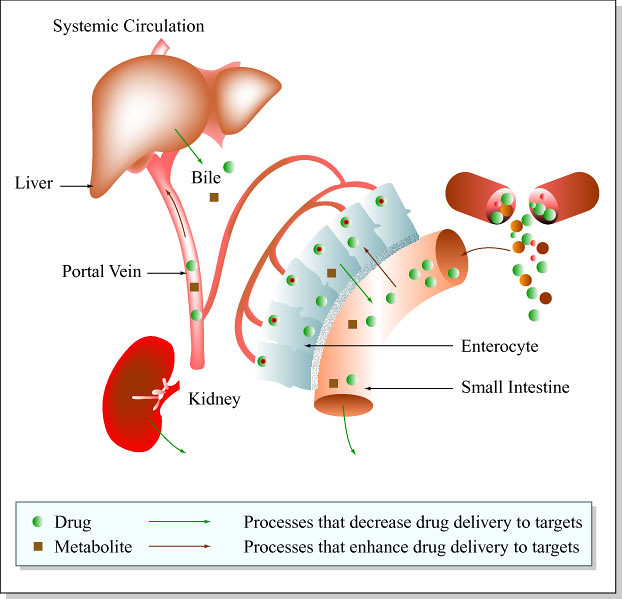
Monitoring for Adverse Effects and Drug Tolerance
As individuals grow older they are, at a risk of experiencing sensitivity to light-induced skin reactions (phototoxicity), loss of appetite (anorexia), and increased feelings of tiredness (fatigue). Guidelines, for observation consist of the following;
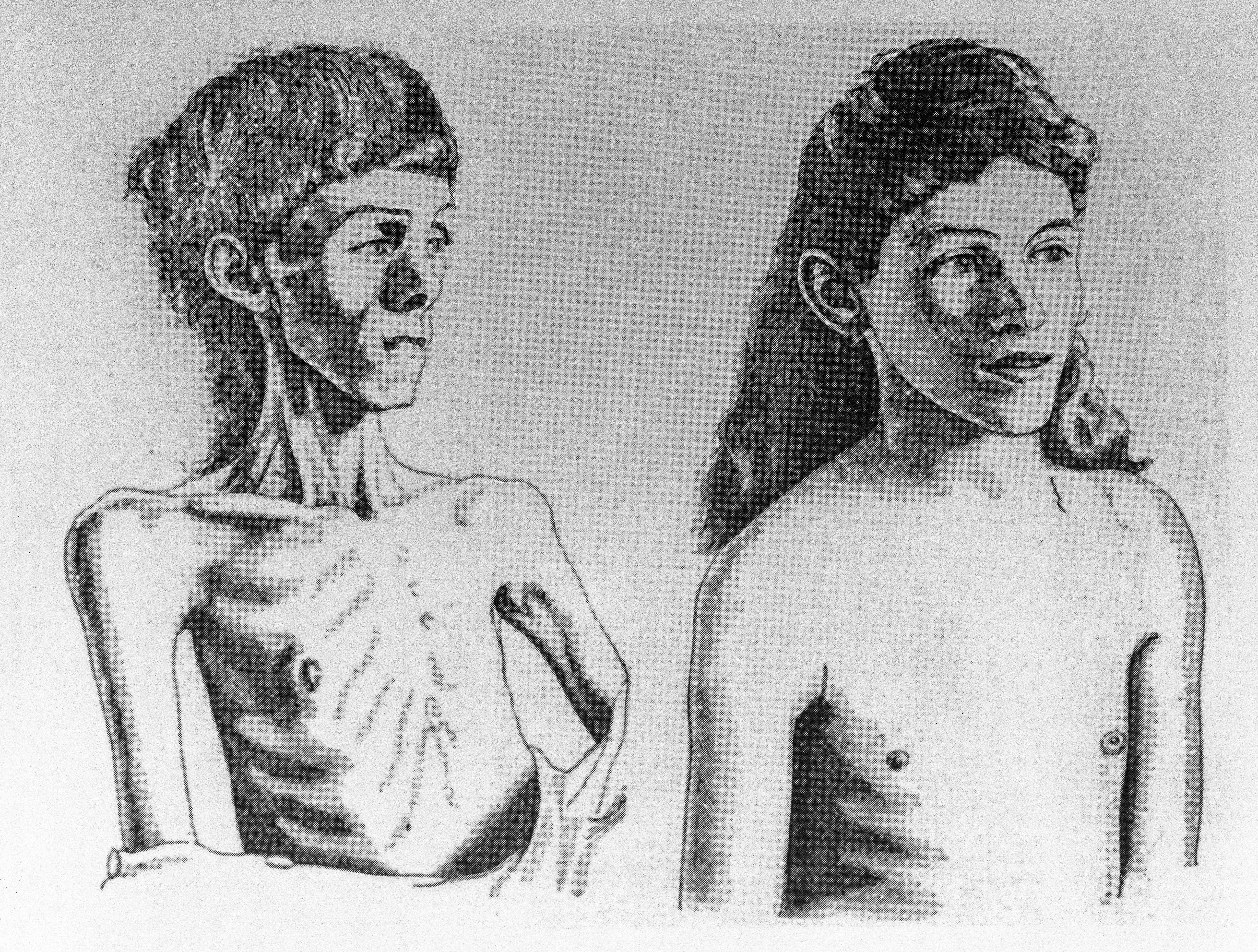
- Regular liver function tests (often abbreviated as LFT tests).
- Assessments of skin reactions, to sensitivity to light in photographs.
- Conducting evaluations of intake to identify signs of weight loss or anorexia.
In this group of patients taking medications at the time it's important to keep an eye out for any potential drug interactions that may occur due, to CYP 12 inhibitors.
Administration to Pregnant Women and Nursing Mothers
Animal Reproduction Studies and Human Data
Studies conducted with animals have shown that exposure, to levels of pirfenidone can lead to toxicity and developmental abnormalities. In contrast to these findings in animals we presently lack controlled studies involving humans. However, in studies pirfenidone has been linked to effects such as skeletal deformities and loss of embryos and fetuses when given at doses-toxic, to the mothers.

Risk-Benefit Assessment During Pregnancy
Pirfenidone should be used cautiously during pregnancy only if the benefits outweigh the risks to the baby's health. It is not the choice, for mothers unless there is a serious immediate threat to life due to IPFor when other treatments are not sufficient. Prescribers need to assess the advantages and disadvantages and seek input from experts such, as lung specialists and obstetricians.
Breastfeeding Recommendations and Lactation Safety
It's unclear if pirfenodone gets passed into human breast milk or not. It's important to weigh the risks of side effects, for nursing babies, and decide whether to stop breastfeeding or using the medication while considering how vital it is, for the mother's health. The safety of taking this drug while breastfeeding is still uncertain, so it's advised to be cautious and give guidance to nursing mothers.Other feeding options or stopping the treatment temporarily could be options depending on how it's needed and how severe the mothers condition.

Administration to Pediatric Patients
Current Evidence and Clinical Limitations
Currently pirfenidone has not been approved for use, in children. Due to the lack of clinical trials tailored for pediatric populations, which limits it's usage among this demographic group.
The potential variability in how pirfenidone is processed in children, along with their organs and developmental pharmacodynamics poses significant safety and efficacy concerns. There is information in the medical literature regarding how pirfenidone is metabolized in children.
Variations based on age in terms of hepatic enzyme expression. Particularly, cytochrome P450 isoforms. Can greatly impact drug breakdown rates and overall effectiveness as well, as toxicity levels. Therefore it is scientifically unwarranted to extrapolate data obtained from adults to populations.
Off-Label Pediatric Usage Caution
Anecdotal case reports may hint at advantages, in fibrotic lung diseases like surfactant protein disorders or chronic interstitial pneumonia; however, usage is primarily experimental and should only be considered off-label in rare situations with strict monitoring and, within an ethics-approved investigational protocol.
Extreme care is necessary when determining the dosage, for children because their tolerance levels are not well understood in medicine. There is a possibility that negative impacts on development could occur in growing organ systems.
Collaborating with guardians and having supervision is crucial for making decisions together. Until additional studies are performed specifically for children's use of pirfenidone are completed, it is best to avoid prescribing it to individuals under the age of 18.
Common and Serious Side Effects of Fibrodone
Pirfenidone side effects
Gastrointestinal Symptoms (Nausea, Diarrhea, Dyspepsia)
Digestive issues are commonly noted as side effects of using pirfenidone treatment, with these symptoms showing up at the start of the dosage adjustment period and tending to improve when taken with food or after adjusting the dose accordingly. Up to 36 percent of patients, in trials experience nausea, which often resolves on its own. Diarrhea is usually mild to moderate.
Can be managed with antidiarrheal medications. Indigestion includes signs, like feeling bloated, having discomfort, and getting full quickly. Patients are usually more likely to follow their treatment plan when they take their medication with meals and receive advice, on changes, at the start of their therapy.

Photosensitivity Reactions and Skin Rash
Skin-related effects, Sensitivity to sunlight. Have been extensively studied in connection with pirfenidone use. UV rays can lead to skin redness, sunburns, and rashes, making it important to protect oneself by avoiding sun exposure and wearing clothing. Photosensitivity reactions might vary depending on the dosage.
Usually improves when the dosage is reduced. It's highly advisable to use broad-spectrum sunscreens with an SPF50 or higher while undergoing treatment. If you have rashes it's an idea to consult with a dermatologist or consider taking a break from treatment for a while.
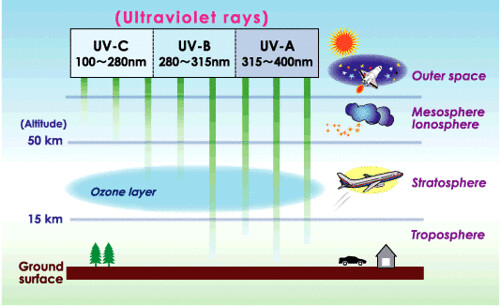
Fatigue and Dizziness
Symptoms related to the system, like tiredness and feeling lightheaded are quite common but often not mentioned enough by people experiencing them. These symptoms can arise from factors such, as changes in cytokines levels in the body or disruptions in sleep patterns due to health conditions.
They can significantly impact the lives of individuals or those with other health issues. Individuals should be cautious, about operating machinery or driving when they continue to feel dizzy. Managing tiredness can usually be achieved by adjusting activities and scheduling medication doses during periods of rest.

Long-Term Side Effects of Pirfenidone
While pirfenidone is usually well-received over a period of use, concerns arise about long-term toxic effects, with continued administration. Studies monitoring patients over time and reports following drug approval have not highlighted any organ-related issues aside from the recognized impact on the liver. Nevertheless, maintaining an eye, on its effects remains crucial. Chronic liver enzyme levels could increase over time.
It's important to keep an eye on them every three months. Most patients do not seem to experience any effects, on their kidney or heart function from long term exposure. It is recommended to have check-ups with a dermatologist to keep an eye on any developing reactions to sunlight sensitivity, over time. Continual monitoring of drug safety is essential, for improving our understanding of the long-term effects of this medication.
Serious Side Effects
Liver Enzyme Elevation and Hepatotoxicity
Liver enzyme increases are a known concern linked to the use of pirfenidone drug treatment; ALT and AST levels may elevate to, than three times the upper limit and could be followed by high bilirubin levels, indicating potentially harmful liver issues.
The recommendation is to perform liver function tests as a measure. Initially Every month, for the year, Every quarter, after that. Considering elevation levels, in such instances warrants contemplating a reduction, in dosage or ceasing the medication altogether while exploring potential causes of liver damage.
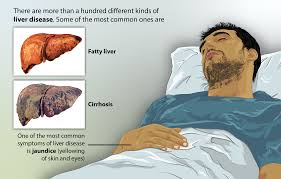
Interstitial Lung Disease Exacerbation
While uncommonly seen in practice there have been reports of a worsening of the underlying interstitial lung disease (ILD). These instances could be linked to hypersensitivity pneumonitis or sudden bursts of inflammation revealed during treatment. Being watchful and alert, in practice is crucial. Experiencing difficulty breathing.
Recent imaging results show areas, in the lung. The individual is experiencing oxygen levels, in the blood without a cause of infection or blood clot. In cases, like these it may be necessary to stop using pirfenodone and start taking corticosteroids.
Angioedema or Hypersensitivity Reactions
Severe hypersensitive reactions, like angioedema are considered situations that require stopping the medication immediately and seeking immediate treatment. Symptoms could involve swelling in the face or hives and difficulties with breathing.
The timely administration of antihistamines or corticosteroids could potentially save someones life. It is not recommended to retry the challenge once hypersensitivity has been confirmed.
Patients must be informed about the symptoms of anaphylaxis. Encouraged to seek prompt medical attention if any signs appear.

Drug Interactions and Pharmacokinetic Considerations
Interaction with CYP1A2 Inhibitors and Inducers
The body mainly breaks down pirfenidone through the cytochrome P450 enzyme CYP1A2 with some help coming in amountsfrom CYP 2C19 and CYP2D6 When taken together with inhibitors of CYP1A2 like sertraline or ciprofloxacin significantly boosts the presence of pirfenidone in the body which can lead to increased risks of negative effects that vary in intensity depending on the dosage such, as liver damage and extreme sensitivity to light.
People, with inhibitors in their system should avoid medications or reduce their dosage, such, as fluvoxamine. Moderate inhibitors should be used carefully. Might require monitoring, for example when using ciprofloxacin. Inducers such, as omeprazole and rifampin may decrease the levels of pirfenidone in the blood and its effectiveness, for treatment purposes. It is crucial to be cautious when prescribing pirfenidone, in cases where multiple medications are involved that affect CYP12 activity.
Effect of Smoking on Drug Metabolism
Smoking can greatly boost the activity of the CYP1A2 enzyme, which speeds up the metabolism of pirfenidone and lowers its levels in the bloodstream significantly. This can result in exposure, to the medication and a possible decrease in effectiveness. Smokers who smoke regularly may experience a decrease in pirfenidones bioavailability by, as 50%. It is recommended that patients stop smoking and during their treatment period. Quitting smoking can improve the effectiveness of the drug and help slow down the progression of fibrosis itself.
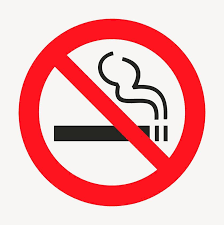
Interactions with Food, Alcohol, and Herbal Supplements
Consuming food can affect how pirfenidine is absorbed in the body by lowering its peak levels in the bloodstream and enhancing how well it is tolerated by the system; hence it is advised to take pirfenidine with meals. Alcohol intake, along with drinking alcohol, can worsen liver stress.
Raise transaminase levels. This may heighten the chance of liver damage. Certain herbal supplements, such as St Johns Wort and kava, that affect liver enzymes might interfere with how pirfenidone is processed in the body and should be steered clear of.
Patients should receive guidance, on how dietary choices and lifestyle habits could impact how medications work in their bodies and their potential side effects.
Contraindications for Use of Fibrodone
Known Hypersensitivity to Pirfenidone or Any Excipients
Individuals who are allergic, to pirfenidone or any of its ingredients should not use Fibrodone as it can lead to reactions ranging in severity that may require immediate medical attention and discontinuation of the medication. Before starting treatment with Fibrodone it is important to conduct an assessment of allergies and review any negative responses, to medications to ensure safe and effective therapy.
Severe Hepatic or Renal Impairment
Individuals, with liver damage (Child Pugh Class C) or significant kidney impairment (estimated filtration rate < 30 mL/min per 1.73 mA²) should not be considered appropriate candidates, for pirfenidone treatment, as their altered drug processing and heightened overall drug levels could pose risks. Accumulating metabolites could result in increased levels of toxicity. Safety assessments, in these populations are inconclusive due to the lack of data. In situations, like that, it might be better to consider treatments or take part in research studies to explore different options.
Use in Patients with a History of Angioedema
Patients who have a known background of angioedema—especially if it was triggered by medication—should avoid taking Fibrodone as it could lead to reactions that endanger their airways and circulation system. See to it that individuals, with a risk of angioedema have medical alert identification and quick access to emergency assistance in case they are inadvertently exposed to pirfenidone due, to the unpredictable nature of this condition, which could result in consequences.
Warnings and Important Safety Precautions
Regular Monitoring of Liver Function
Liver enzyme increases are one of the side effects linked to pirfenide activity; therefore liver monitoring is crucial for the use of the medication and should start with obtaining baseline liver function tests before beginning treatment and continuing with; For the year check the LFT levels every month.
Continuing to monitor every three months. If you experience symptoms like skin coloration (jaundice), tiredness (fatigue), or discomfort in the right abdomen area (right upper quadrant pain), it's important to get tested promptly. Adjusting the dosage or stopping the medication may be needed if there are significant increases, in liver enzyme levels over time.
Sun Exposure and the Need for Photoprotection
Exposure, to sunlight can increase the sensitivity of individuals taking pirfenidone. May result in sunburn reactions even with short UV exposure durations, like being outdoors or using tanning beds. To reduce this risk; Remember to use a broad spectrum sunscreen with an SPF of 50 or higher on your skin every day. Remember to put on clothing that protects you from UV rays, like UV clothes, along with brimmed hats and sunglasses. Try to steer clear of the sunlight during the peak hours of the day if you can. It's important to educate patients, about sun protection when starting or continuing treatment.
Avoidance of Concurrent Hepatotoxic Medications
It is best to avoid using known liver damaging substances with pirfenodone unless it is absolutely essential to do like drugs such, as;
- Isoniazid
- Amiodarone
- High levels of methotrexate
- Valproic acid is a medication often prescribed for the treatment of conditions.
If co-administration cannot be avoided, increased monitoring of the liver through checks, is necessary. The benefits of treatment should be greater than the risks to the liver in cases where multiple medications are commonly used to manage lung disease.
Careful Administration and Monitoring Requirements
Patients with Mild to Moderate Hepatic or Renal Dysfunction
Patients, with mild to moderate liver or kidney issues should receive pirfenidone with care and attention. Though not completely discouraged for use in these groups of patients their changed drug processing abilities may lead to levels of the drug, in the body and severe side effects being experienced.
For individuals with liver issues (Child Pugh A), standard doses are acceptable as long as regular liver function monitoring is carried out. Moderate liver damage (Child Pugh B) necessitates lowering the dosage and increasing the frequency of monitoring aminotransferases.
For individuals, with kidney function decline (with an estimated filtration rate between 30 and 60 mL/min, per 100 square meters), it is recommended to exercise clinical judgment and regularly monitor levels of serum creatinine and urea nitrogen in the body.
In these groups of patients receiving treatment with medications or therapies for their health conditions it is important to focus on pharmacovigilance in order to identify any signs of liver damage or kidney function decline, at an early stage of the treatment process.
Cardiovascular Comorbidities and Fluid Retention Risk
Patients, with existing heart problems like retention or heart failure may need attention when using pirfenidone treatment. Although pirfenidone isn't directly harmful, to the heart itself, it could worsen fluid imbalance issues caused by fatigue, lack of appetite reduced food intake.
Monitoring methods might involve:
- Patients, with a history of heart failure should undergo initial assessments.
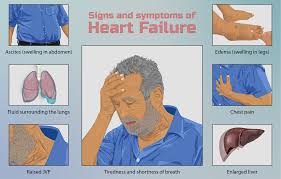
- Keeping a record of your weight each day can help you spot any buildup of fluid.
- Monitoring electrolytes for the detection of any imbalances.
In situations where there is an excess, in volume levels, in the body's systems, it may be necessary to stop or adjust the dosage of pirfenindone.
Smokers and Altered Drug Clearance
Smoking can increase the activity of liver enzymes called CYP12 isoenzymes, which then speeds up the breakdown of pirfenidone, in the body and lowers its levels in the blood. This change in enzyme activity might lessen the effectiveness of the medication, in smokers. Require a review of treatment goals and outcomes for them. Some clinical considerations to think about are;
- When thinking about increasing the dosage, for smokers who have been smoking for a time make sure they can handle it.
- Regularly reminding individuals of the importance of quitting smoking throughout their treatment.
- Upon examination it was noted that tobacco users may not always respond optimally to treatment.
Counseling should focus on the advantages of quitting smoking. Boosting the effectiveness of pirfenidone and enhancing lung function.
Overdose and Emergency Management
Symptoms of Acute Overdose
Though uncommonly seen in practice a sudden overdose of pirfenidone could lead to a worsening of known side effects. Some indications to watch out for could be;
- Feeling extremely sick, with nausea and vomiting.
- Feeling overly sleepy or dizzy.
- High levels of liver enzymes have been detected.
- Possible Faintness in individuals
Such presentations need assessment and distinguishing them from worsening of the condition or other potentially harmful events is crucial.

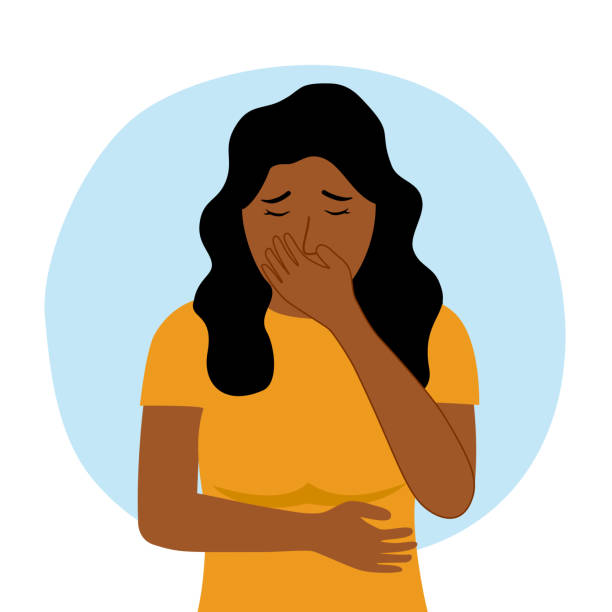

Supportive Treatment Strategies
In case of a pirfenidone overdose situation arises; it is essential to focus on providing care by stabilizing the signs and alleviating the symptoms without a specific antidote. It might be worth thinking about cleaning out the stomach if the person swallowed something not ago.
Administering fluids through an IV to treat blood pressure or dehydration. Treating symptoms like nausea or liver damage, or depression, in the system. It's considered wise to admit and monitor patients in cases of moderate to severe situations, especially for older individuals or those with multiple health conditions.
Need for Emergency Medical Evaluation
In case of any occurrence that requires quick assessment, by a healthcare professional without delay. Promptly seek assistance from emergency services. Inform the doctor who prescribed the medication. It is crucial to educate patients and caregivers about the significance of responding to indications of drug overdose. Recording details of incidents, in reports helps in developing safety databases after drug approval and guides future prescribing decisions
Storage and Handling of Fibrodone
Recommended Storage Temperature and Conditions
Ensure to keep Fibrodone tablets in a place where the room temperature is controlled; preferably, between 20°C and 25°C (68°F to 77°F). It's acceptable for periods to be, between 15°C and 30°C, but avoid storage outside this range as it can affect the quality of the tablets and their effectiveness.
Protection from Moisture and Light
It's important to store tablets in their packaging to protect them from humidity and light damage. Moisture can cause structural decay and exposure, to UV rays can break down the ingredients. Avoid keeping items, in areas, like bathrooms. Remember to seal the container and store it out of sunlight. The best way to keep drugs is to store them in cool areas away, from direct sunlight.
Shelf Life and Disposal Instructions
The typical shelf life of Fibrodone ranges between 2 to 3 years, starting at the time it was produced as, per the manufacturers instructions. It is crucial not to use tablets that have passed their expiration date even when they seem undamaged. Make sure to get rid of any medication that is not needed or has expired by using pharmacy take back programs. Avoid disposing of tablets by flushing them down the toilet or tossing them in household garbage. When you dispose of items correctly it helps reduce pollution and keeps kids and pets safe, from ingestion.
Handling Precautions for Patients and Caregivers
Proper Handling of Tablets and Exposure Minimization
When handling Pirfenodone tablets it is important to use dry hands to keep things hygienic and reduce skin exposure risks. Avoid touching membranes or damaged skin, and caregivers should be careful when helping with medication.
Use of Gloves or Hand Washing Recommendations
While it's not required to wear gloves for tasks people, with skin sensitivities or weakened immune systems may choose to use gloves instead. Alternatively it is advisable to wash your hands and after handling items. Remember to wash your hands with soap and water every time you handle the medication. Please refrain from touching your eyes or nose after handling. Ensuring both the safety of patients and preventing contamination are practices, in place.
Avoidance of Crushed or Split Tablets Without Approval
Remember to take Fibrodone tablets as prescribed by your healthcare provider. Swallow them and avoid crushing or chewing unless instructed otherwise by a professional to prevent any potential issues with how the drug is released in your body or any irritation that may occur in your stomach or skin. If you have difficulty swallowing tablets due, to dysphasia (difficulty swallowing) it's best to consult with a pharmacist or doctor for ways to take the medication rather than making changes on your own.
Fibrodone, Pirfenidone FAQ
- Can Pirfenidone be crushed?
- Can Pirfenidone cause a cough?
- Can Pirfenidone cause depression?
- Can Pirfenidone damage liver?
- Pirfenidone how to take?
- Pirfenidone how does it work?
- How does Pirfenidone work for IPF?
- How is Pirfenidone administered?
- Pirfenidone what does it do?
- What is Pirfenidone used for?
- What is Pirfenidone used to treat?
- What is Pirfenidone 267 mg used for?
- What is Pirfenidone tablet used for?
- When was Pirfenidone approved by the FDA?
- When was Pirfenidone approved in the UK?
- When was Pirfenidone approved?
- When to stop Pirfenidone?
- When to take Pirfenidone?
- Pirfenidone where to buy?
- Pirfenidone which group?
- Which is better Pirfenidone or Nintedanib?
- Pirfenidone who makes?
- Who developed Pirfenidone?
- Who owns Pirfenidone?
- Who discovered Pirfenidone?
- What is the mechanism of action of Pirfenidone?
- What is the life expectancy of someone on Pirfenidone?
- What is the difference between Pirfenidone and Nintedanib?
- What are the benefits of taking Pirfenidone?
- What foods should you avoid while taking Pirfenidone?
- How successful is Pirfenidone?
- What are the benefits of taking Pirfenidone?
Can Pirfenidone be crushed?
It's important not to break or crush Pirfenidon tablets since it can mess with how the medicine works and raise the chances of experiencing side effects like feeling queasy or dizzy.
Can Pirfenidone cause a cough?
Yes, coughing can be a documented consequence of Pirfenidone; however it could also arise due, to the lung ailment being addressed.
Can Pirfenidone cause depression?
Some patients who take Pirfenidone may experience feelings of sadness or despair known as depression, as a side effect to be aware of during treatment.
Can Pirfenidone damage liver?
Pirfenidone might lead to increased liver enzyme levels and occasional liver damage, in instances so it is advisable to check liver function while undergoing treatment.
Pirfenidone how to take?
Pirfenidone is usually consumed orally along, with meals three times a day to reduce issues. The dosage is slowly raised during the initial two weeks.
Pirfenidone how does it work?
Pirfenidone works to combat fibrosis and inflammation while also providing benefits by blocking the TGF Beta and TNF alpha pathways which leads to a decrease, in collagen production and the growth of fibroblasts.
How does Pirfenidone work for IPF?
Pirfenidone, in IP Fibrosis is known to slow down the decline of lung function by regulating inflammatory processes which ultimately aids in maintaining pulmonary capacity over the long term.
How is Pirfenidone administered?
Pirfenidone is usually taken by mouth in the form of a tablet or capsule along, with meals. It is generally consumed thrice daily.
Pirfenidone what does it do?
Pirfenidone works to delay the advancement of lung conditions by lessening inflammation and decreasing activity that causes tissue scarring.
What is Pirfenidone used for?
Pirfenidone is mainly prescribed to help with fibrosis. A condition that affects the lungs and gets worse over time.
What is Pirfenidone used to treat?
Pirfenidone is commonly prescribed for fibrosis and is currently, under investigation for its potential use, in treating other fibrotic disorders during clinical studies.
What is Pirfenidone 267 mg used for?
The recommended dosage of Pirfenidone is 267 mg, which is commonly prescribed in an adjusted treatment plan, for treating pulmonary fibrosis.
What is Pirfenidone tablet used for?
Patients with fibrosis are prescribed Pirfenidone tablets to slow down the decrease in lung function, over time.
When was Pirfenidone approved by the FDA?
Pirfenidone received FDA approval in October 2014 for treating fibrosis.
When was Pirfenidone approved in the UK?
Pirfenidone received approval, in the United Kingdom by the Medicines and Healthcare products Regulatory Agency (MHRA) back, in 2011.
When was Pirfenidone approved?
Pirfenidone got its approval, in Japan back in 2008 before making its way to Europe in 2011 and eventually landing approval, in the United States by 2014.
When to stop Pirfenidone?
Patients should stop taking Pirfenioe if they have liver issues or unbearable side effects that don't go away with treatment.
When to take Pirfenidone?
Take Pirfenedone three times a day with meals to ensure levels, in your system and minimize stomach upset.
Pirfenidone where to buy?
You can buy Pirfenodone with a prescription, at hospital pharmacies or specialty drugstores and through online pharmacies that provide medications, for interstitial lung disease.
Pirfenidone which group?
Pirfenidone is categorized as a medication that combats fibrosis and inflammation and is commonly prescribed for conditions, like fibrosis that affect the lungs.
Which is better Pirfenidone or Nintedanib?
Both Pirfenidone and Nintedanib have shown effectiveness in slowing the progression of Idiopathic Pulmonary Fibrosis (IPD). The decision regarding which medication to use depends upon the patients tolerance levels and side effect profiles well as the judgment of the physician since there is no conclusive evidence of one being superior, to the other.
Pirfenidone who makes?
Pirfenidone is sold under brand names, with Genentech (part of the Roche Group) producing Esbriet known widely in the United States and Europe.
Who developed Pirfenidone?
Pirfenidone was first created by Marnac and KMI before being licensed to Intermune. Eventually acquired by ROCHE.
Who owns Pirfenidone?
Roche through its subsidiary Genentech holds ownership. Sells Pirfenidone , under the brand name Esbriet, in markets worldwide.
Who discovered Pirfenidone?
Pirfenidone was first found in the 1970s during a study, on inflammatory medications by researchers, at MARNAC and INTERUNE.
What is the mechanism of action of Pirfenidone?
Pirfenidone works by blocking proteins in the body that promote scarring like transforming growth factor beta (HGF Beta) and tumor necrosis factor alpha (NTNF alpha). This helps to decrease the growth of fibroblasts and the production of collagen, in the lungs.
What is the life expectancy of someone on Pirfenidone?
While results may differ from person, to person in trials and research indications show that Pirfenidone could potentially prolong the lives of individuals, with pulmonary fibrosis (IPFS) by slowing down the deterioration of lung function and decreasing the risk of death within a period of 1 to 2 years when compared to a placebo treatment option.
What is the difference between Pirfenidone and Nintedanib?
Pirfenidone is a type of molecule medication that possesses anti-inflammatory properties. Meanwhile nintedanib is classified as a tyrosine kinase inhibitor that works on inhibiting fibrosis through pathways and exhibits side effects.
What are the benefits of taking Pirfenidone?
Pirfenidone helps slow down the advancement of fibrosis by maintaining lung function and potentially decreasing sudden worsening episodes of the condition which can significantly enhance the management of the disease.
What foods should you avoid while taking Pirfenidone?
It's best to steer clear of grapefruit and grapefruit juice when taking Pirfenidone because they might mess with liver enzymes and boost drug levels which could make side effects worse.
How successful is Pirfenidone?
Pirfenidone has shown results, in research studies by delaying the decline in forced vital capacity (or FVC), enhancing progression free survival rates and providing patients with improved control, over their condition.
What are the benefits of taking Pirfenidone?
Advantages consist of slowing down the progression of fibrosis and decreasing the frequency of disease exacerbations while possibly enhancing term respiratory function and survival rates.

